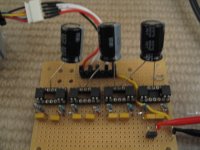GGoodrum
1 MW
The thing that most don't get about these switched cap/charge pump-type of balancers is that it is meaningless to talk in terms of charge cycles, as it relates to balancing. Standard shunt-based BMS designs don't do balancing until it is time to charge. The balancing logic then tries to bring the cells back into balance at the end of the charge cycle. The idea behind the switched cap scheme is that the circuits are always working, so the cells should always be pretty close. These aren't meant to be hooked up during a charge, and expected to bring the cells back into balance quickly.
Richard and I played around with a couple designs based on an LM2663 chip, back a couple years ago, but back then I didn't really "get it" yet and was thinking in terms of a "quick balancer", and thought the current transfer limit of around 200mA, wasn't going to cut it. I may have to revisit this, at some point, because 200mA is more than enough transfer current, I now think, for an "always on" type of system. Hmmm, now where did I put that schematic file...

-- Gary
Richard and I played around with a couple designs based on an LM2663 chip, back a couple years ago, but back then I didn't really "get it" yet and was thinking in terms of a "quick balancer", and thought the current transfer limit of around 200mA, wasn't going to cut it. I may have to revisit this, at some point, because 200mA is more than enough transfer current, I now think, for an "always on" type of system. Hmmm, now where did I put that schematic file...
-- Gary



